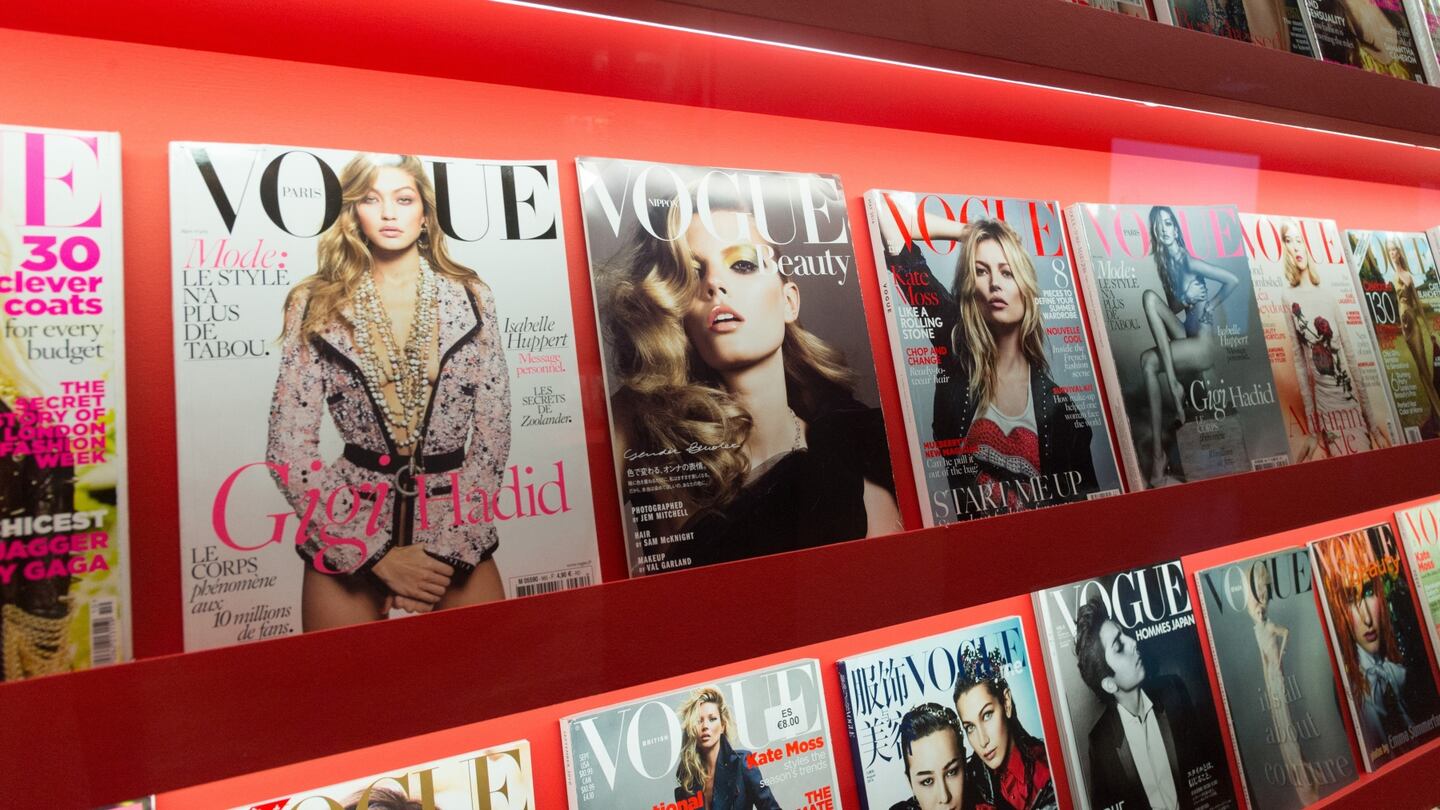
The Business of Fashion
Agenda-setting intelligence, analysis and advice for the global fashion community.

Agenda-setting intelligence, analysis and advice for the global fashion community.

“We’re burned out, we’re fed up, we’re overworked and underpaid.”
Those words, uttered by four Condé Nast staffers, formed the heart of a video featuring 73 of the company’s employees announcing their intention to form a union. It might have just as easily served as a rallying cry at many of the media giant’s rivals.
Over the past few years, publishers from Hearst to Refinery29 have seen employees unionise in search of guaranteed severance, greater transparency from management and, most of all, better pay. However, this week’s announcement of an attempt to create a union at Condé Nast is perhaps the most meaningful sign of a fundamental shift in the way fashion media works.
The owner of still-influential magazines including Vogue and Vanity Fair, Condé Nast — as well as other glossy magazine publishers — have long leaned on cultural cachet as a recruitment tool. However, the advertising revenue that once paid for trips to Europe for fashion month, which many editors consider essential to their jobs, has dwindled, with salaries following suit. Meanwhile, opportunities outside the legacy press, from Instagram to Netflix, have grown.
ADVERTISEMENT
While a position at a magazine still often carries an air of prestige, cachet doesn’t pay the bills. Editors who have stuck with traditional media now routinely supplement their income with freelance work. Some consult behind the scenes or work as stylists on the side. But the most reliable source of income for many comes from sponsored posts on social media. In some cases, income from these sponsorship deals can equal or even surpass an editor’s salary.
“It got to a point where it would have almost been financially irresponsible for me to not at least try to figure out if there was a way for me to do both,” said Lindsay Silberman, who acquired 100,000 Instagram followers as an editor at Town & Country and Elle Decor before striking out on her own as a full-time influencer in 2018. “It’s not like my salary was so incredible that I didn’t need the extra money.”
At the time, Hearst barred employees from taking sponsorship deals, a policy it maintains to this day, though plenty of the publisher’s staff quietly seek out work on the side anyway. Magazines are facing growing pressure from their staff to take a more lenient approach. This year, the debate has come to a head at several major publishers, including Condé Nast.
At Cross Purposes
In March, Andrew Nguyen told his roughly 15,000 Instagram followers that he was fired from New York Magazine’s The Cut for taking a paid deal with Target. He said his editor had prohibited him from working with the retailer after he had written a short post about a collaboration between Target and Christopher John Rogers, because it would constitute a conflict of interest.
But part of the problem, Nguyen said in his post, was his then-employer’s inconsistent policy regarding freelance work (he noted he had previously partnered with Amazon Prime after covering that company). At Condé Nast, the pro-union video also included clarity around freelance work as one of their demands.
Hearst’s blanket ban on sponsored posts is increasingly an outlier in the industry. Condé Nast requires that editors give the company a cut of any independent deal. Staffers told BoF the rate could be as much as 40 percent — more than a traditional manager’s or agent’s fee — though there isn’t a set standard rate in place. (A spokesperson for Condé Nast declined to share details of its policies when asked by BoF.)
Publishers cite ethical obligations in restricting editors’ freelance work — the thinking goes that a beauty editor can’t be counted on to offer their unbiased review of Neutrogena’s latest product if they’re angling for the brand to sponsor their Instagram feed. They also argue that editors are only getting offers from brands because of their spot on the masthead, so their employer deserves a cut, if not the whole pie.
ADVERTISEMENT
Current and former editors who spoke with BoF noted that fashion magazines don’t always follow their own rules; it’s an open secret that brands can buy placement on a cover and shower editors with press trips and gifts, with favourable coverage implied in exchange, if not explicitly required.
They’re also quick to point out the benefits to publishers of having a team of editors with influence. Kristina Rodulfo, a former beauty editor for titles including Elle and Women’s Health, who left to be a full-time content creator in May 2021, said that growing a following on social media was something editors were encouraged to do. (Not all editors, however, have followings — somewhat negating the argument that the sole reason an editor does is because of their magazine job.)
“They can sell you and feature you in their branded content,” she said. “It felt a little dissonant, being told that you can’t take on brand partnerships for your personal social platforms, but then those platforms could be part of a package they sell.”
Working Together
For years, magazine art directors, stylists and creative directors have often been hired as consultants rather than full-time employees so that they could continue to do other, often better-paying, work outside of their duties at the magazine. Jessica Willis, fashion director at The Cut, for example, has the ability to take brand deals into the terms of her job — although she holds a contract position, not a staff role.
But those types of deals are typically made with more senior-level talent that have the leverage to negotiate. For younger editors who have never worked outside of the system, it’s more difficult to create this sort of arrangement.
Higher salaries would resolve some of the tension over outside work. But big raises are unlikely with most of the big publishers in cost-cutting mode. The lack of upside when it comes to salary makes publishers’ take-it-or-leave-it approach to sponsored posts and freelance work a difficult pill to swallow.
“This was like robbery,” said Chrissy Rutherford, a former Harper’s Bazaar editor, said of her own negotiations with Hearst over a payout for branded content she appeared in and published on her personal Instagram. The payouts were initially correlated to an editor’s follower count and could amount to thousands of dollars per post. But by the time she left in 2019, she was receiving a flat $500 payment per deal.
ADVERTISEMENT
“We’re all asking for raises, you can’t give that to us,” she said. “Here’s an area where we can actually supplement our income, your rates were not negotiable. They did not even want to hear it.”
As staffers continue to unionise, standard agreements around taking on sponsored deals may be written into contracts. And as the younger generation that grew up sharing their lives on Instagram and TikTok, racking up followers in the process, joins the workforce, the freedom to take on brand deals will likely become more of a prerequisite for job seekers.
“Social media aptitude is essential for any media job these days,” said Amy Odell, the former digital editor of Cosmopolitan and author of a forthcoming biography on Anna Wintour. “You’re going to be drawn to people who have influence, that’s not going away.”
Odell suggests that publishers operate much like a talent agency, with advertising sales teams nabbing brand deals for editors, and taking a smaller cut.
It’s likely that publishers will also begin to offer more part-time jobs at magazines — like the ones senior-level creatives have been able to negotiate for years — so that editors can do the work they want outside of the system and still benefit from what little cachet is left from being a part of it.
“There is definitely a part of me that feels like I wish I could do both,” said Rodulfo. “I loved my job and being a beauty editor. I worked so hard to get to that point in my career where I was a beauty director and to have to leave, that was definitely a difficult decision.”
Chavie Lieber contributed reporting to this story.
More employees at magazine giant Condé Nast are seeking to unionise, part of a growing wave of organising efforts across the publishing industry.
InStyle, Glamour and other titles are going online-only, but brands and publishers say the glossy format still has a role to play in telling stories — and driving revenue.
The heavyweight international Vogue editors who once filled the front rows at Paris Fashion Week were gone this season, a stark sign of the restructuring that has consolidated power in the hands of global editor Anna Wintour and her regional deputies.

Diana Pearl is News and Features Editor at The Business of Fashion. She is based in New York and drives BoF’s marketing and media coverage.
The stylist is set to unveil a bi-annual print magazine and digital platform, with a team that includes Holly Shackleton and Fran Burns.
Luxury book publishers — and husband and wife — Prosper and Martine Assouline join BoF founder and editor-in-chief Imran Amed to discuss the genesis of their publishing business and how they are growing it into a global lifestyle brand.
Now under the ownership of British publisher Future, both Marie Claire and WhoWhatWear are contending with how to grow their new parent’s US operations in the ever-challenging media landscape.
Fast Company has named The Business of Fashion one of the ‘world’s most innovative companies’ for a second time for demonstrating ‘how a media brand can leverage AI to add reader value rather than erode trust with AI-written news articles.’